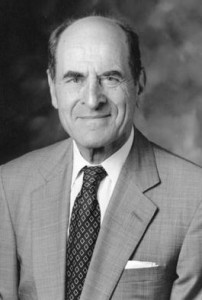The Heimlich Maneuver
Henry Judah Heimlich (b. 1920) was born in Delaware and studied at Cornell University. In 1943, he earned his M.D. and was soon shipped off to the Pacific as a US Navy surgeon at the height of World War II. In China, he found a quick and effective way to treat trachoma. In the early 50s, he developed a method for replacing the esophagus, which is recognized by some as history’s first complete organ transplant. His experiences in treating injured soldiers helped him invent the flutter valve (also known as the Heimlich valve) which quickly drains blood and air out of a punctured chest cavity. Over 150,000 of these life-savers are used each year in critical situations. Heimlich also invented an efficient oxygen delivery system for injured patients, called the Micro Trach. He is most famous, however, for developing the technique of abdominal thrusts to save people who are choking. Following an eye-opening 1972 New York Times report that showed 3,000 Americans died yearly in choking accidents, Heimlich researched the ideal way to open an obstruction in the throat. He experimented with dogs and large chunks of meat, finding that an upward thrust into the diaphragm successfully opened a blocked airway. Heimlich published his findings in the Journal of the American Medical Association. At the same time, he knew that this information was far too important to be practiced only by health professionals, and described the technique in the more common Emergency Medicine. From there, the procedure’s success and fame spread quickly, and was soon known as the “Heimlich maneuver”. Heimlich also developed a technique to help stroke victims re-learn how to swallow, researched maneuvers for asthma and cystic fibrosis, and suggested a controversial treatment for AIDS (since debunked and rejected). He has made a number of other controversial suggestions, leading some to label him a charlatan of sorts. Nonetheless, it is estimated that the Heimlich maneuver has saved at least 50,000 people (including former President Ronald Reagan). Many credit Heimlich with “saving more lives than any other living American”, and he has been awarded the prestigious Lasker Award for Public Service. Last year, Heimlich published an autobiography, and a film about his life is currently in the works.
UPDATE: Sadly, Henry Heimlich passed away in December of 2016.
Words of the Week
Do not pass up a single day without doing a mitzvah.
– Rabbi Israel Baal Shem Tov


